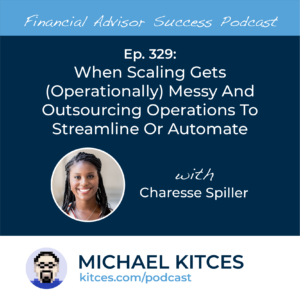Enjoy the current installment of "Weekend Reading For Financial Planners" - this week's edition kicks off with the news that in a settlement with the SEC, robo-advisor platform Betterment agreed to pay a $9 million penalty for allegedly misstating the frequency that its automated tax-loss harvesting system was scanning some client accounts between 2016 and 2019, highlighting the importance of ensuring that marketing messages and services provided match, not only for robo-advisors, but for human advisors as well. And that the SEC is now scrutinizing not just whether clients are invested in a manner consistent with their Investment Policy Statement, but also that if the advisory firm promises various 'tax-smart' management tactics (such as tax-loss harvesting), that the SEC will be examining whether the firm really followed through accurately, for every client, on those commitments as well.
Also in industry news this week:
- The SEC approved a new FINRA rule intended to make it tougher for brokers to have client disputes expunged from their record
- A Morningstar survey suggests that clients are more likely to fire their advisor for service or relationship reasons rather than because of fees or lackluster investment returns
From there, we have several articles on cash flow and spending:
- Why I Bonds might be losing some of their luster amid a declining inflation rate
- How many consumers are moving their banking activities to their brokerage firm
- Why advisory firm clients might want to consider personal cyber insurance
We also have a number of articles on advisor marketing:
- Why it can be valuable to first consider what makes an advisory firm marketable before selecting specific marketing tactics
- The potential benefits for advisory firms of hiring a fractional marketer
- Why spending money to produce valuable content, rather than on advertising, can pay off for a firm and their broader community
We wrap up with 3 final articles, all about managing time:
- How advisory firm owners can prepare themselves and their firms for time away from the office
- Why having new experiences might be the key to making it feel like time is passing more slowly
- The gradual process that led 1 advisor to realize the current size of his firm was 'enough'
Enjoy the 'light' reading!

 Welcome back to the 329th episode of the Financial Advisor Success Podcast!
Welcome back to the 329th episode of the Financial Advisor Success Podcast!

